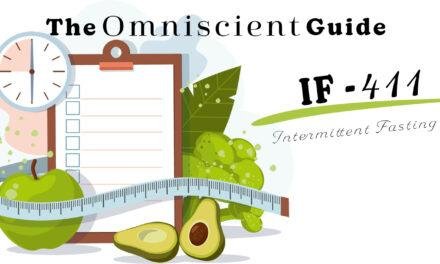Surviving Valentine’s day if single is about keeping three simple acts.
One day out of the year and the idea that you are single shines like a beacon. This is especially true if unfortunate enough to be in an environment where more people are married, or in a relationship, than single. The end-result is usually a feeling of isolation. The fact is, this is a culture that celebrates relationships and frown on the unattached. Is it a wonder that unmarried or uncoupled people feel pressure on this day more than any? After all, the statistic speaks volumes. In the United States, not but two years ago, there were 62.34 million married people, compared to the 36.1 million singles. If you are single, you are feeling the pressure to find a partner. Once a year, that pressure magnifies tenfold.
What’s Valentine’s Day About Anyway?
Like most holidays, Valentine’s day’s origins have its uncertainties. According to history.com it is a combination of both christian and roman traditions. In the christian tradition, the catholic church recognizes several saints for its emergence. Valentine, a priest marrying young couples in secret. He felt it unjust when Claudius II outlaw marriage for young men because they made better soldiers. Claudius eventually beheaded him.
Then there is Valentine of Terni. Considered the true namesake of the holiday. Imprisoned by Claudius II for helping Christians escape roman prisons. He apparently fell in love with the jailor’s daughter. Supposedly, he wrote her a letter before his death in which he signed “From your valentine.” His tale became the symbol of romantic gestures that survive through the ages. Valentine of Terni became one of the most popular saints in England and France, representing the origins of this romantic day. As history would have it, the Catholic Church chooses the middle of February to celebrate the day. Their goal was to Christianize a pagan holiday known as Lupercalia.
Valentine’s Day Grew Into a Love Industry
It was the 1400s when Valentine’s day greetings developed to written expressions. The oldest is 1415 by Charles Duke of Orleans to his wife. While imprisoned in the Tower of London, he wrote a poem expressing his love. A few centuries later, cupid came into the mix. In 1602, Renaissance painters took to the image of Caravaggio’s Cupid, which showed a young nude boy with wings and a bow. By the 19th century, they linked this cupid to the already popular holiday for his love creating abilities.
The growth of the love industry grew massively when congress voted in 1850 to decrease postage rates. This postage reform resulted in ordinary Americans sending and receiving mail. The reform also industrializes printing press technology, allowing Hallmark to mass produce Valentine’s day cards. By 1916, it was convenient and cheaper to celebrate the holiday by sending postcards, which enabled the industry to become what it is today.
The propaganda of Valentine’s day
Celebrated in most countries, Valentine’s day represents a day when couples enjoy a romantic day of sharing gifts meant to represent love. For some couples, the act is not about loving the person, but represents that they are together. Therefore, the day is about offering a gift or flowers, but not voicing love. It’s a day when getting a reservation at a restaurant is difficult. Florists and some retail establishments make massive profits. Weeks before, businesses big and small advertise the approaching day in print, online and in the media.
On average, Americans spend around 12.19 million dollars for Valentine’s day. It’s a day that gives businesses an opportunity to make a hefty profit.
The truth about this holiday
Like Christmas and Thanksgiving, the truly symbolic meaning of this day is awry. We should celebrate the birth of christ every day, we should be thankful every day, and we should show our love every day. For businesses, Valentine’s day is an opportunity to make a profit on the expression of love. The act of love itself is an ongoing process that requires more than a day to not just express with a gift, but show.
How do you survive Valentine’s day?
By ignoring the idealization of this holiday. Use the day as an opportunity to confirm loving yourself and others. Don’t fall victim to the co-worker, dating a man or woman for a week, and getting a dozen roses. Realize that such gestures are superficial and having the real thing is a better aim.
Ignore the media and corporate stamp on the day, but don’t ignore the day. You don’t have to be in a relationship to celebrate love. It’s something that’s already around us. Acknowledge and celebrate it with friends and family. Here are three really simple acts to do leading up to the day. Survive Valentine’s day by ignoring the propaganda and focusing on its true meaning.
1. Practice
Practice self-compassion. Negative feelings on this day are not uncommon. Those negative perceptions include feeling sad, lonely, and disappointed. Tie these feeling to the needless attention this day gets. Think of the extensive promotions from the media and certain companies. We can also choose to ignore the unnecessary attention and focus on the love of family, friends and self.
2. Share
Survive Valentine’s day by sharing love. On this day each year, it’s a great time to embrace our seniors, or those who lost a loved one. Their pain may seem inconsolable, but holding a widow’s hand, or giving him or her a reason to not dwell on what they’ve lost, may be invaluable.
Related: Find Your Bliss And Joy, But First Be Happy
3. Reflect
Reflecting on the true meaning and expression of love is the third and final act. Each year, recite this verse, taken from the Bible. Corinthians 13:1-13. It is such an excellent representation of what love is and not what the media and companies that profit from this day advertise.
“Love is patient, love is kind. It does not envy; it does not boast; it is not proud. It does not dishonor others, it is not self-seeking, it is not easily angered, it keeps no record of wrongs. Love does not delight in evil but rejoices with the truth.”













